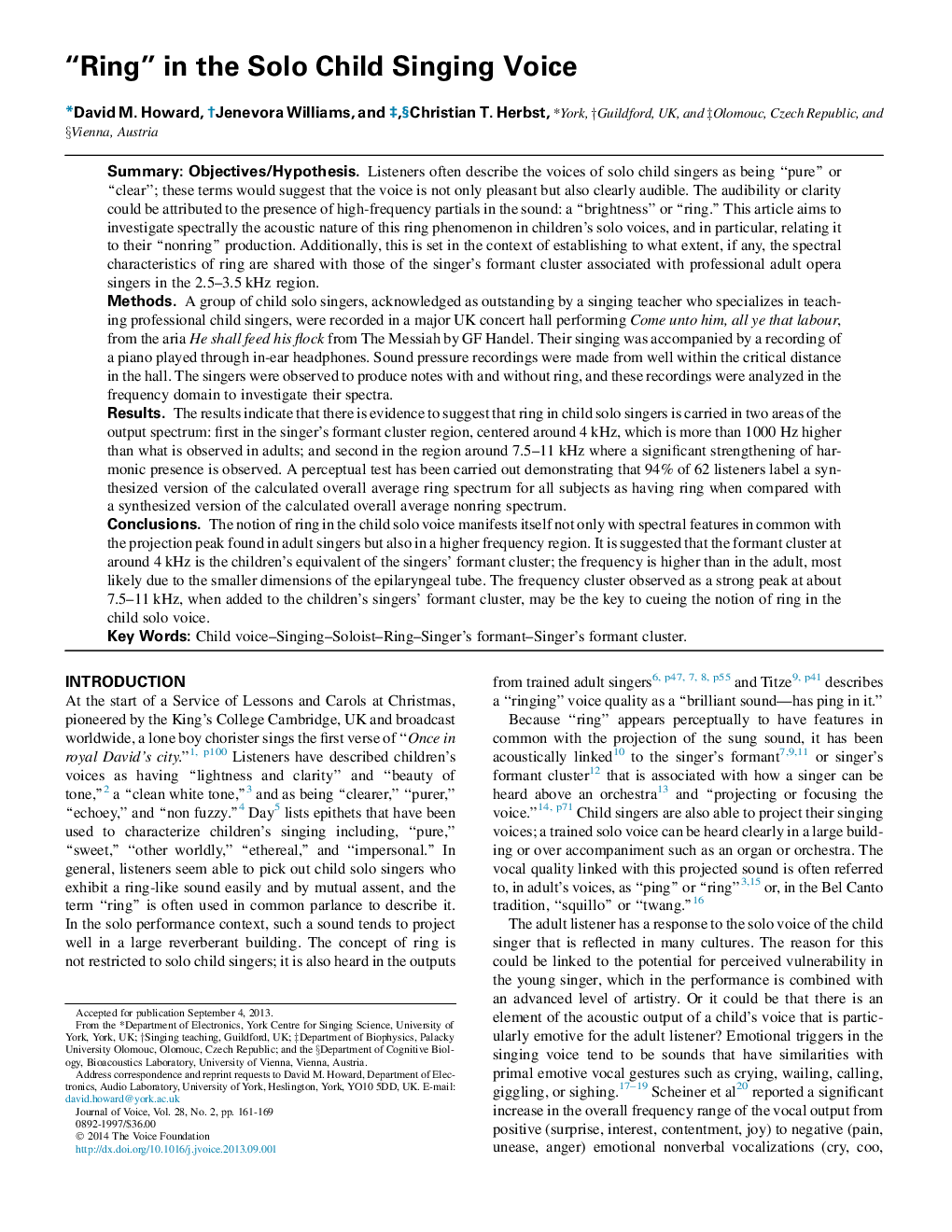| کد مقاله | کد نشریه | سال انتشار | مقاله انگلیسی | نسخه تمام متن |
|---|---|---|---|---|
| 1101851 | 953579 | 2014 | 9 صفحه PDF | دانلود رایگان |
SummaryObjectives/HypothesisListeners often describe the voices of solo child singers as being “pure” or “clear”; these terms would suggest that the voice is not only pleasant but also clearly audible. The audibility or clarity could be attributed to the presence of high-frequency partials in the sound: a “brightness” or “ring.” This article aims to investigate spectrally the acoustic nature of this ring phenomenon in children's solo voices, and in particular, relating it to their “nonring” production. Additionally, this is set in the context of establishing to what extent, if any, the spectral characteristics of ring are shared with those of the singer's formant cluster associated with professional adult opera singers in the 2.5–3.5 kHz region.MethodsA group of child solo singers, acknowledged as outstanding by a singing teacher who specializes in teaching professional child singers, were recorded in a major UK concert hall performing Come unto him, all ye that labour, from the aria He shall feed his flock from The Messiah by GF Handel. Their singing was accompanied by a recording of a piano played through in-ear headphones. Sound pressure recordings were made from well within the critical distance in the hall. The singers were observed to produce notes with and without ring, and these recordings were analyzed in the frequency domain to investigate their spectra.ResultsThe results indicate that there is evidence to suggest that ring in child solo singers is carried in two areas of the output spectrum: first in the singer's formant cluster region, centered around 4 kHz, which is more than 1000 Hz higher than what is observed in adults; and second in the region around 7.5–11 kHz where a significant strengthening of harmonic presence is observed. A perceptual test has been carried out demonstrating that 94% of 62 listeners label a synthesized version of the calculated overall average ring spectrum for all subjects as having ring when compared with a synthesized version of the calculated overall average nonring spectrum.ConclusionsThe notion of ring in the child solo voice manifests itself not only with spectral features in common with the projection peak found in adult singers but also in a higher frequency region. It is suggested that the formant cluster at around 4 kHz is the children's equivalent of the singers' formant cluster; the frequency is higher than in the adult, most likely due to the smaller dimensions of the epilaryngeal tube. The frequency cluster observed as a strong peak at about 7.5–11 kHz, when added to the children's singers' formant cluster, may be the key to cueing the notion of ring in the child solo voice.
Journal: Journal of Voice - Volume 28, Issue 2, March 2014, Pages 161–169
